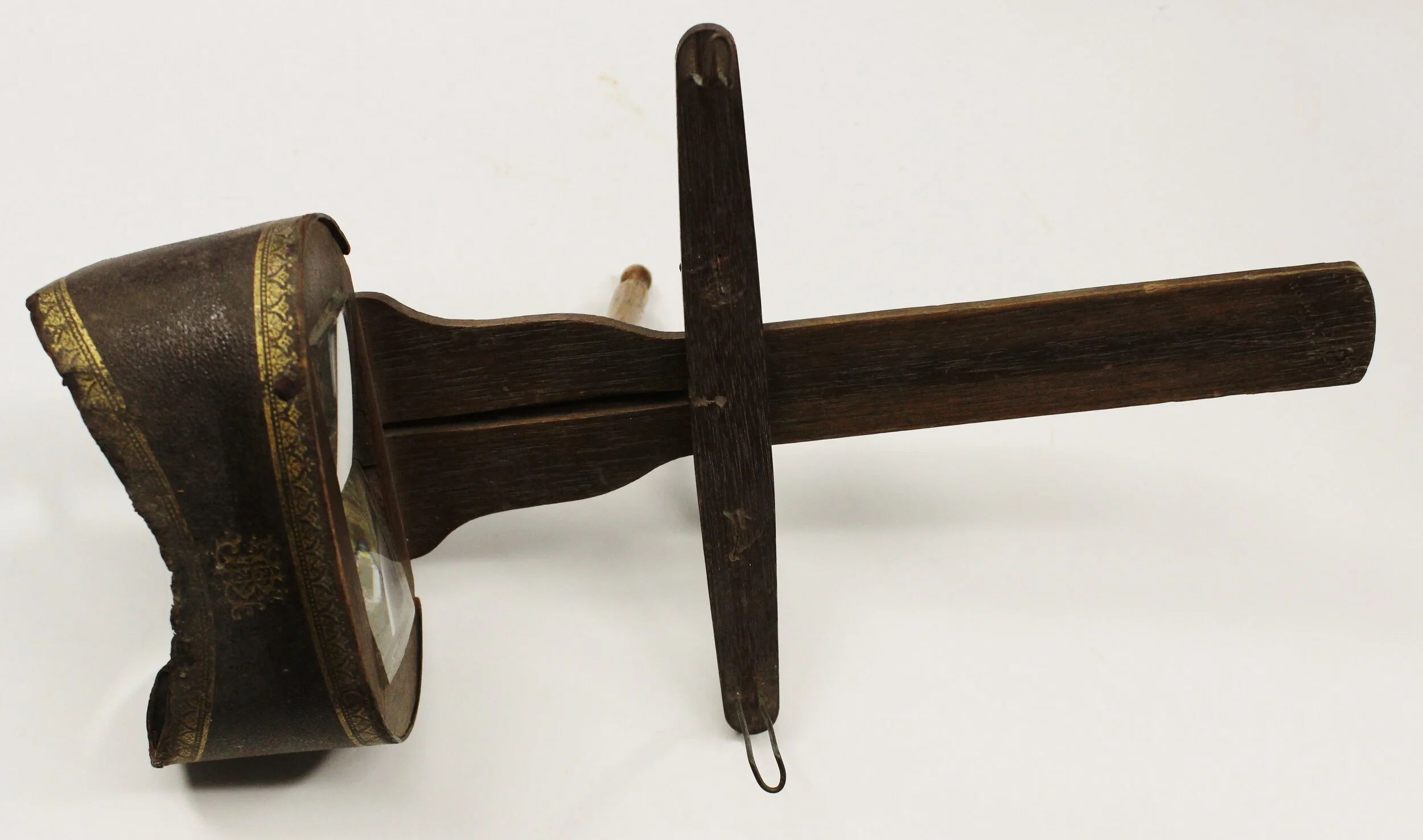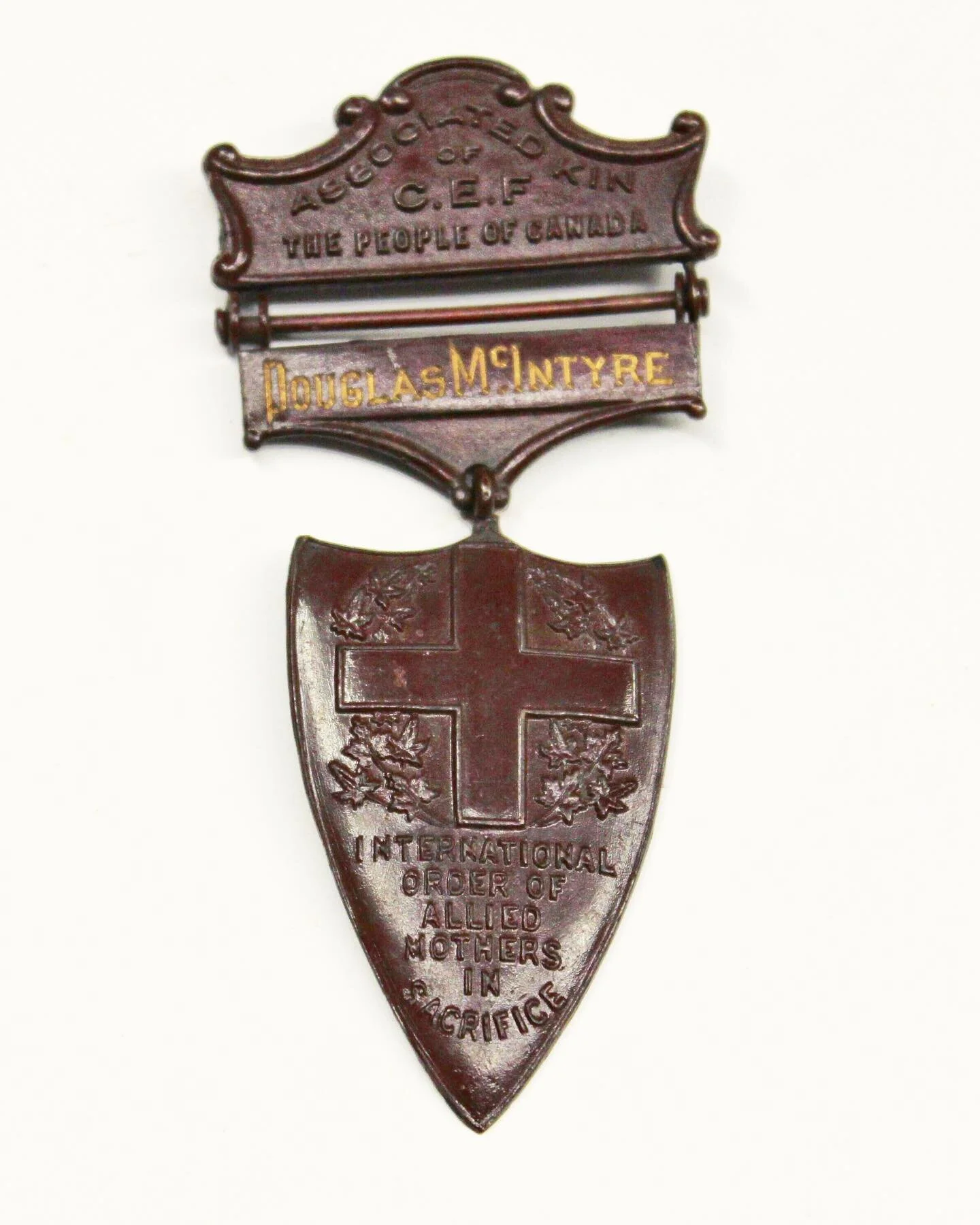
Collection
When it was established in 1925, Murney Tower Museum, then Kingston’s only museum, was tasked with sharing the story of our city. Today, we proudly continue this tradition by interpreting an extensive collection of objects that paint a detailed picture of Kingston’s past. Our collection has evolved over the decades, but today consists of over 1300 artifacts, divided into three main collection areas: the Gardiner Collection, the McGregor/McIntyre Collection, and the General Collection. These collection areas represent a number of different aspects of Kingston’s history, from its time as a British military stronghold to the domestic lives of residents in the early twentieth century. Taken together, the collection tells the captivating, conflicting, and sometimes troubling history of Kingston.
General Collection
As the oldest operating museum in Kingston, Murney Tower was once the only place for residents to donate items of historical importance. Collected over the course of several decades, the General Collection consists of an eclectic mix of artifacts that encompass various aspects and periods of Kingston’s history. It highlights our community’s desire to tell its own story.
Kingston was long thought to be the birthplace of hockey, and while it is now believed that hockey was invented in England, hockey and ice skating have a long history as popular pastimes in our city. As such, artifacts like this pair of ice skates, which are believed to have been handmade circa 1824, are important to our community’s past and present. Unlike most of today’s skates, which fully enclose the foot, these skates were designed to be worn with a winter boot, which would be fastened to the skate with screws or a separate strap.
Collection Highlights: Ice Skates
Stereoscope
In order to use this stereoscope, a stereograph (a card with two nearly identical pictures on it) would be placed in the device. When a viewer looked through the lenses, the pictures would appear as one, three-dimensional image. While this technology might seem unremarkable compared to today’s virtual reality, in the nineteenth century it was the only way for people to view the wonders of the world from the comfort of their own home.
Kingston Mills Photograph
This colourized photograph, likely taken in the late nineteenth or early twentieth century, depicts the locks and bridge at Kingston Mills. In 1785, the British government constructed a saw and grist mill here, establishing the location’s significance to local settlers; however, the construction of the Rideau Canal in the first half of the nineteenth century solidified the strategic importance of Kingston Mills within British North America. Although this photograph captures a tranquil and leisurely scene, the construction process of the Rideau Canal was anything but. At Kingston Mills alone, around one hundred workers were infected with malaria, and thirteen were killed by the disease. Today, the poor conditions endured by the men who worked on the Rideau Canal are widely recognized. The Celtic Cross at Douglas R. Fluhrer Park in Kingston was erected in 2002 in order to commemorate the approximately 1000 lives that were lost in building the historic waterway.
McGregor/McIntyre Collection
Donated to the museum in 1970 by Mrs. W. Bruce McGregor, the McGregor/McIntyre collection consists of items from the estate of Miss Margaret McIntyre. The McIntyre family were notable members of the Kingston community in the nineteenth and early twentieth centuries. Through a diverse range of artifacts, from war medals to silver objects, this collection captures the McIntyre family’s achievements, heartbreaks, and everyday lives.
This International Order of Allied Mothers in Sacrifice medal, which was granted by the Associated Kin of the Canadian Expeditionary Force to mothers who lost their children in the Great War was bestowed on Margaret Ann McIntyre for the loss of her son, Lieutenant Douglas Neil McIntyre. Lieutenant McIntyre, who graduated from Queen’s University in 1903 with a BAH in English and Classics, was killed on November 8, 1917 at the Battle of Passchendaele while serving as an intelligence officer in command of a scout and observation corps. He rests in peace at Tyne Cot Cemetery in Belgium.
Collection Highlights: International Order of Allied Mothers in Sacrifice Medal
Silver Thimble and Case
Though beautiful to look at, this silver thimble would not have been much use for sewing as the soft silver could be easily punctured by a steel needle. Rather, the thimble and its monogrammed, velvet-lined case served as a symbol of the McIntyre family’s wealth.
Though beautiful to look at, this silver thimble would not have been much use for sewing as the soft silver could be easily punctured by a steel needle. Rather, the thimble and its monogrammed, velvet-lined case served as a symbol of the McIntyre family’s wealth.
The Gardiner Collection
The Gardiner collection provides a glimpse of the history of the British royal family through the lens of stunning collectible items bequeathed to us by Miss Mary Aleda Gardiner. Miss Gardiner, a teacher in the Kingston area for over thirty years, was gifted her first piece of Victorian China in the 1960s, and her collection of royal commemorative pieces grew rapidly to over 177 items by the late 1970s. Today, Murney Tower Museum is proud to uphold Miss Gardiner’s passions for education and history through this collection.
What is perhaps most interesting about this platter, which commemorates the Golden Jubilee of Queen Victoria, is that while the grey transfer print decorations include symbolic designs, such as the figure of Britannia in the centre, many of the decorations are informative. From this platter, we are able to glean information about the total population, area, imports, and exports of the Empire. It is this information that makes the platter a quintessentially Victorian piece as it expresses not only a strict attention to detail and a proud interest in the empire but also a keen desire for practicality even in items meant to be decorative.
Collection Highlights: Victorian Golden Jubilee Platter
Victorian Cameo Pitcher
This beautiful, emerald green jug was made in order to commemorate Queen Victoria’s 1897 Diamond Jubilee, which celebrated her 60th year on the throne. The jug was made by WT Copeland and Sons, the name given to Spode pottery between the mid-nineteenth and mid-twentieth centuries. While Spode, which has produced pottery for multiple members of the royal family, is perhaps most famous for its transfer printing, the cameo on this piece would have been formed independently and slipped on over the glazed, ironstone jug.
Edward VIII Coronation Cream Pitcher
This cream pitcher commemorates the May 12, 1937 coronation of King Edward VIII – a coronation which never took place. Although Edward was scheduled to be crowned on this date, he abdicated the throne in December of 1936 in order to marry Wallis Simpson, an American divorcée. This piece points to the absurdity of royal collectibles: As mass-produced objects they often commemorated events that had not yet taken place.
Collection Stories
Check out some blog posts about our collection items!
Bibliography
An Alphabetical List of the Proprietors of the Bank of British North America, on the 1st January, 1868. London: Waterlow and Sons, 1868.
“The Annual Militia Report.” Canadian Militia Gazette, March 26, 1891. Canadiana.
The Annual Register: A Review of Public Events at Home and Abroad. London: Rivingtons, 1877.
Beal, Bob, and McLeod, Rod. Prairie Fire: The 1885 North-West Rebellion. Edmonton: Hurtig Publishers Ltd, 1985.
“The Camp.” Shaftesbury Hall Weekly Bulletin 6, no. 2 (March 14, 1885), 1-2.
C.F. Fraser, ed. “News of the Week.” The Critic, May 18, 1888. Canadiana.
“Colonel Bowen Van Straubenzee.” Memorials and Records, St. George’s Cathedral. Las modified January 21, 2012. http://www.stgeorgescathedral.ca/index.cfm/history-architecture/memorials-records/article-colonel-bowen-van-straubemzee/.
“Comment and Criticism.” Canadian Militia Gazette, October 7, 1886. Canadiana.
“Gossip of the Militia.” The Canadian Militia Gazette, June 7, 188. Canadiana.
Middleton, Fred. Parting Address to the People of Canada. Toronto: Hunter, Rose, and Company, 1890.
“Militia General Orders (No. 8), of 27th April, 1888.” Canadian Militia Gazette, May 3, 1888. Canadiana.
“Portraits of Interest.” Canadian Pictorial and Illustrated War News, July 11, 1885. Canadiana.
Record Sheet, College No. 162, Casimir Cartwright Van Straubenzee. Royal Military College Club of Canada.
The Riel Rebellion. 3rd ed. Montreal: “Witness” Printing House, 1885.
Salloum, Habeeb. “Louis Riel’s Last Stand.” Military History 23, no. 3 (Date): 22-28.
“Sikh Wars (1845-46 and 1848-49).” In The Oxford Companion to Military History, edited by Richard Holmes. The Oxford University Press, 2004. Oxford Reference.
Toronto Mail, April 13, 1885. Quoted in Beal, Bob, and McLeod, Rod. Prairie Fire: The 1885 North-West Rebellion. Edmonton: Hurtig Publishers Ltd, 1985.











